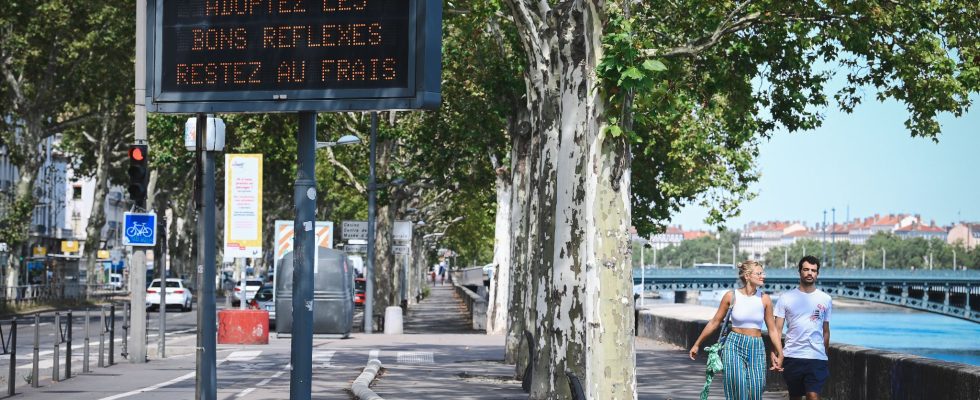It is a heat stroke unprecedented in its magnitude at the end of August. The heat wave continued to overwhelm a large southern half of France on Sunday August 20 with abnormally high temperatures which should rise further at the start of the week.
Météo-France has placed 50 departments on orange alert. “A lasting and intense heat wave for the period has settled over the country”, summarizes the forecaster, noting that “maximum temperatures of 35 to 39 degrees” were observed on Sunday in the departments in orange vigilance, “up to at 41 degrees peak”. “In the South-East, we recorded up to 41.3°C in Cadenet (Vaucluse)”, underlines the public establishment. “The heat wave peak is expected between Tuesday and Wednesday”.
“Certain absolute records are likely to be broken, in particular Tuesday towards the Rhone valley, with 40 to 42 degrees expected”, warns Météo-France, qualifying this heat wave episode as “particularly late for the season”. Temperatures will generally soar this Monday, August 21, between 33 and 37 degrees, up to 37 to 40 degrees in Occitania and from Rhône-Alpes to Provence and Var. It will be locally 41°C in the shade, especially between Drôme, Ardèche, northern Gard and Vaucluse.
Red vigilance, an “extreme heat wave”
It is possible that vigilance will be increased to red, the maximum level, especially in the Drôme and the Ardèche, even the Vaucluse and the Gard, on the map of Monday 4 p.m., warned the public establishment on Sunday. Asked this Monday on BFMTV and RMC, Aurélien Rousseau, Minister of Health, spoke of the “fear, tomorrow (Tuesday), of having to switch to red vigilance (heat wave) in part of the departments of the Rhône Valley” where “the ‘we could reach temperature levels never before measured in France’.
Since June 2004, the Météo-France vigilance map has included the risk of a heat wave. As indicated by the forecaster on his site, the orange vigilance level corresponds to “a heat wave, i.e. a period of intense heat for 3 consecutive days and 3 nights, likely to constitute a health risk for the entire exposed population”. The level of red vigilance corresponds to “an extreme heat wave, exceptional in its duration, intensity, geographical extension, and presents a strong health impact for the entire population and societal impacts (drought, water supply drinking water, development or cessation of certain activities, etc.).
This situation “requires maximum mobilization and coordination of the State’s response with the activation of the Interministerial Crisis Unit (CIC), which brings together all the ministries concerned.” In the event of red vigilance, the prefect “take all necessary measures to deal with the situation”.
In June 2022, for example, several prefectures of departments located in New Aquitaine had banned public sporting events. The prefect of the Gironde department had announced the ban on “all public events outdoors or in non-air-conditioned premises”. For his part, the mayor “puts the municipal crisis unit in a position to operate 24 hours a day” and “calls on all the resources that can be mobilized in his municipality”.
Nationwide, “this episode is the hottest of summer 2023, also one of the latest with such a level of intensity,” says Météo-France. The current meteorological configuration creates a “heat dome”, “with the high pressures which block the heat”, explained to AFP the agency. It is “a vast anticyclonic zone at any level of the atmosphere which traps the already hot air and heats it by compression, a bit like a bicycle pump”, explains Météo-France.
“The second ingredient is global warming which increases the probability of having high temperatures so late,” adds the forecaster. Only a northern quarter of France will be spared, Brittany and the departments bordering the Channel enjoying a relatively cool atmosphere.
